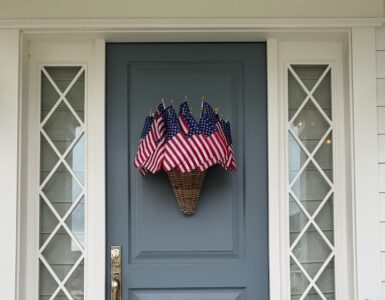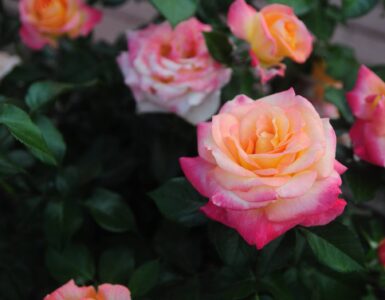You can attract pollinators to your garden with the right set up.
Pollinators are key to a thriving outdoor landscape. They don’t usually come into your garden of their own accord. Bees, hummingbirds, and even some beetles need a reason to come and enjoy your space.
Sheriden Hansen shares how to attract pollinators into your garden. She shares what species we see here in Utah, and the types of plants to put in the ground for them. She also shares some alternative ways to bring in bees and hummingbirds.
Find more gardening expertise at extension.usu.edu.
How to Attract Pollinators to Your Garden
Common pollinators are bees, butterflies, moths, and hummingbirds. We need them for food! Pollinators are responsible for one in every three bites of food that we take. Here are ways to attract pollinators.
Native Bees
- Utah is a hot spot for native bee species diversity.
- Most of these bees are solitary, so not living in a hive like the honey bee and many nest in cavities of hollowed out reeds/grasses/logs and in ground nests.
- The last count for the number of species in Utah was less than 1,000.
- Native bees are very unlikely to sting and are GREAT pollinators (better than honeybees).
How do we attract them?
- Provide a place to nest.
- Pick up mason bee and butterfly houses.
- Leave areas of bare ground where they can nest.
- Install a beehive (check city ordinances first).
- Leave out nesting materials.
- Don’t overly clean the garden – bits of grass or leaves can be used for nesting cavities.
- Be careful with chemicals. Many chemicals are toxic to bees and other pollinators, use them sparingly and at night when the bees are tucked into their nests.
Attracting other Pollinators
- Add hummingbird feeders to the garden.
- Create a bee garden or a cafeteria for the pollinators.
- Array of flowers that are easy to access.
- Disc shaped flowers, flowers with large openings that are easy to access are best for most pollinators. Tubular flowers work well for butterflies, moths, and hummingbirds.
- Select plants for a succession of blooms.
- Want to have something in bloom spring, summer and fall? Check out this fact sheet with an excellent plant list for Utah and bloom timings so you can select an array of plants to bloom all season.
- Plant in patches or clumps. Single plants are good, but planting in groups of three or five is better. The pollinators will have better access to nectar and pollen.
- Bees are often attracted to blue, pink, and purple flowers
- Leaving out a water dish filled with pebbles, marbles, or floating corks is a great way to provide access to water and keep bees from drowning. Refill it every day.
Studio 5 has affiliate relationships, so we may get a small share of the revenue from your purchases. Items are sold by the retailer, not by KSL. All prices are subject to change.















what to write in college essay
personal essay writing
write essays for money online
custom essays writing
narrative essay examples
mla citation for essay